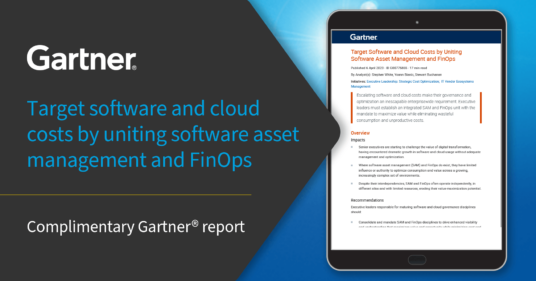
FinOps and Cloud Optimization
How To Target Software and Cloud Costs by Uniting Software Asset Management and FinOps: Insights from Gartner®
March 15, 2024

FinOps and Cloud Optimization
March 15, 2024

FinOps and Cloud Optimization
February 13, 2024

FinOps and Cloud Optimization
January 29, 2024

FinOps and Cloud Optimization


FinOps and Cloud Optimization
November 27, 2023

FinOps and Cloud Optimization
October 11, 2023

FinOps and Cloud Optimization
September 22, 2023

FinOps and Cloud Optimization
September 20, 2023